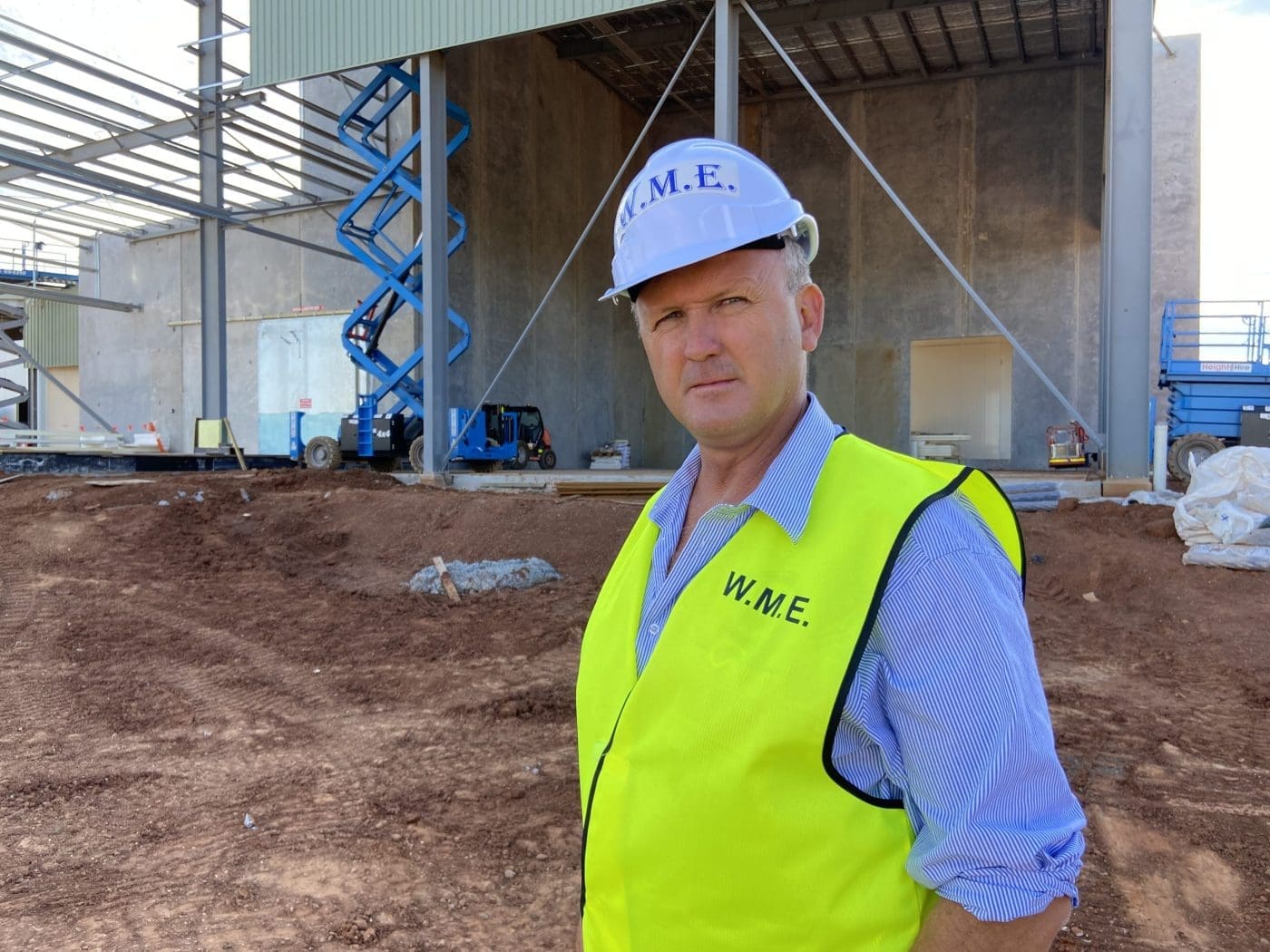
Western Meat Exporters managing director Campbell McPhee says a significant expansion of the Charleville abattoir is expected to be completed by the end of May.
WHILE goat prices have dropped more than $6/kg since the middle of last year, a Queensland processor says more markets are opening up for the commodity.
Charleville-based Western Meat Exporters managing director Campbell McPhee recently spoke to Beef Central’s Weekly Grill podcast talking about the amount of investment that has gone into goats, the new market opportunities opening up and what is happening with Australia’s main market in the United States.
The past couple of years have been extremely strong for the goat market, with prices peaking at $9.20/kg in June last year, according to Meat & Livestock Australia. The strong market has resulted in strong investment, with many producers taking advantage of newly constructed exclusion fences to manage goat populations.
Mr McPhee said the company could start a new shift immediately.
“We are looking to see if we can go down that path, because we definitely have the customers overseas that can handle the product,” he said.
“Production levels are lower than they have been in previous years, in 2015-16 we processed 2.3 million goats across Australia and we were 1.6m last year – labour is big part of that story.”
Processing capacity has significantly increased in the area in the recent years, with WME completing an expansion last year and Thomas Food International opening a plant in Bourke.
Mr McPhee said the current price slump was the result of a “perfect storm”, with the US economy slowing, shipping problems and an increasing supply of meat.
“We have been lucky to engage with some old markets over the past few months and get some product moving quicker than it was,” he said.
“This has given America, our main market, a chance to go through its inventory and catch up from where it was. I think we will go forward together and the future is still looking good there.”
Potential in the UK, Caribbean and India
Mr McPhee said the drop in goat prices could see more exports of goat meat to the Caribbean.
“The Caribbean has been a long-term customer and they are happy to see the current prices,” he said.
WME has also been providing information in the UK free trade agreement negotiations.
“We have a lot of potential there, particularly with our skin-on goats which is something there is a demand for in the UK and they have trouble accessing it from other nations,” he said.
“We have been helping the Australian Government get those final protocols signed off, so we can get that trade going because there is huge potential there.”
Other major trade negotiations have been happening between Australia and India, with tariffs removed for several products including lamb. Mr McPhee said the 30pc tariff is yet to be removed.
“I’m told goats are still in the conversation for the second round, but the Indian Government has been fairly protectionist and they like to have the belief they can supply themselves,” he said.
“The goat industry is so big over there, every farmer would have one goat or more and they like to protect that side of it. As the negotiations continue, we are hoping we can supply some of the more urban customers.”
Exclusion fences a game changer
The supply side of the goat market has seen some significant investment and research in recent years, with the widespread construction of government-subsidised exclusion fences making up a lot of the investment.
Mr McPhee said the fences have allowed producers to control numbers and keep throughput up in the abattoir.
“We are seeing a younger article coming through and you will get more of line of animals,” he said.
“Before fences, whatever they harvested was put on a truck and they sent them – then we would have to sort it out.”
Mr McPhee said the carcase weights coming through the plant had also increased.
“We used to average about 16kg and now we are up to about the 18 or 19kg,” he said.
“Our main customers are used to getting a smaller product, and we have to educate them and tell them that the goat is still as lean as it was – it is just a higher weight range.”
Asked whether he was concerned about the future supply of goats with the current slump in prices, Mr McPhee said there was plenty of silver linings to come from the latest market.
“I look at more from the perspective of the last 30 years and how we have been able sustain it for so long and keep it at a viable level,” he said.
“I think this was the drop in prices that we needed to see to make sure people weren’t over-capitalising in some areas and I think we might have been going down some pathways a little bit too strong.
“We had a lot of new comers in the industry and a lot of the people who had been involved for 20 years, they were waiting for something like this to happen.”
Mr McPhee said he expect the goat market to stabilise higher than mutton prices and lower than lamb prices – with goatmeat being quite a versatile product across the world.
“If it ends up running between mutton and lamb prices going forward, I think it will be a very viable option for producers in this area and the western districts of NSW,” he said.
“It is a great animal that can handle the conditions out here and thrive.”
